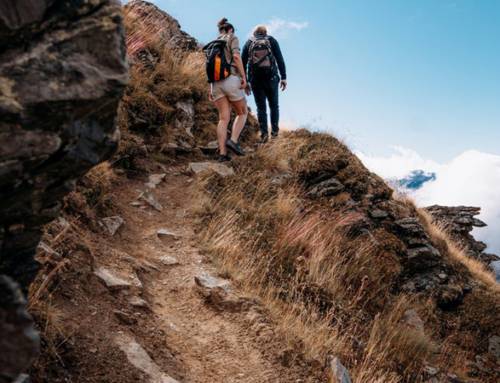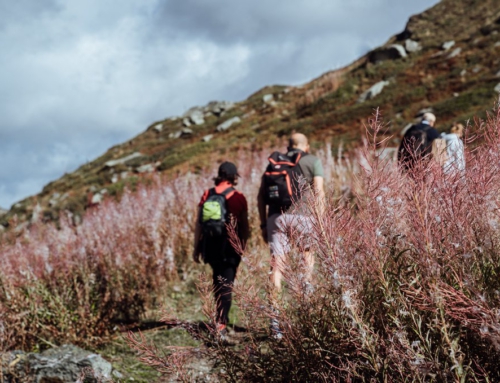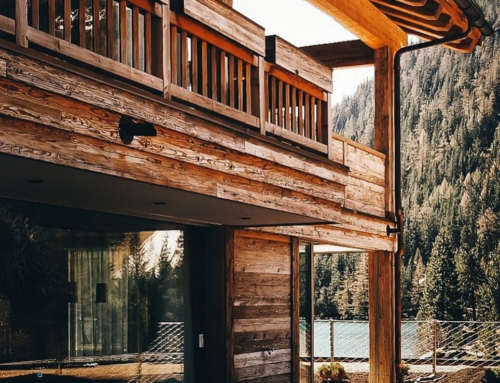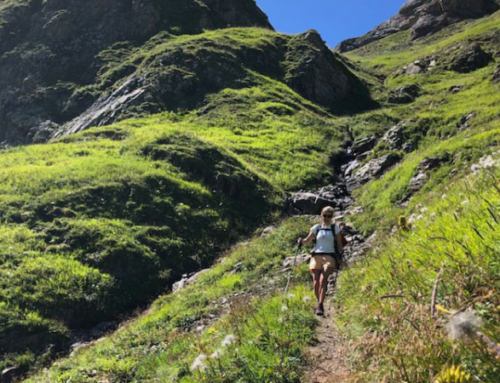The Ultimate Guide to Snow Shoe Hiking and Snowshoeing Adventures
 When winter blankets the world in snow, many people seek outdoor activities to embrace the cold and stay active. One of the best ways to enjoy the beauty of a snowy landscape is through snow shoe hiking or snowshoeing. This winter sport is perfect for those who want to explore nature at their own pace, from beginners looking to try something new to experienced hikers seeking fresh terrain.
When winter blankets the world in snow, many people seek outdoor activities to embrace the cold and stay active. One of the best ways to enjoy the beauty of a snowy landscape is through snow shoe hiking or snowshoeing. This winter sport is perfect for those who want to explore nature at their own pace, from beginners looking to try something new to experienced hikers seeking fresh terrain.
What is Snowshoeing?
Snowshoeing, or snow shoe hiking, is the activity of walking over snow using special footwear designed to distribute your weight, preventing you from sinking too deeply into the snow. These snowshoes, attached to your regular hiking boots or winter footwear, allow you to trek through snowy trails, forests, and open landscapes with ease.
This activity has been around for thousands of years, historically used by indigenous people as a mode of transportation during winter months. However, snow shoe hiking has evolved into a popular winter sport enjoyed by adventurers all around the world. Modern snowshoeing equipment is lightweight, easy to use, and available for all skill levels.
Benefits of Snow Shoe Hiking
One of the major benefits of snowshoeing is that it’s an accessible activity for almost anyone. Unlike skiing or snowboarding, which can require significant training and equipment, snow shoe hiking only requires a pair of snowshoes and a bit of determination. Whether you’re trekking across a flat meadow or hiking up a mountain trail, snowshoeing is a great workout that engages multiple muscle groups and boosts cardiovascular health.
Here are some specific benefits of snow shoe hiking:
- **Full-Body Workout**: Snowshoeing is not only a great cardiovascular exercise, but it also works out your legs, core, and arms as you balance and move through different terrain.
- **Low Impact**: For people looking for a low-impact winter activity, snow shoe hiking is a great option. The activity is gentle on your joints, making it perfect for all ages.
- **Mental Health Boost**: Snowshoeing allows you to connect with nature, reduce stress, and improve your mood. The serene surroundings and peaceful atmosphere make snow shoe hiking a rejuvenating experience.
- **Adaptable to Any Skill Level**: From flat trails to steep inclines, snowshoeing offers a variety of challenges. Whether you’re a beginner or a seasoned hiker, you can find a snow shoe hiking trail that suits your ability.
Gear You Need for Snowshoeing
To get started with snow shoe hiking, you’ll need some essential gear. The main piece of equipment, of course, is the snowshoes themselves. These come in a variety of shapes and sizes, depending on the type of snowshoeing you plan to do.
- Snowshoes: The size and design of your snowshoes will depend on the terrain and snow conditions. For deep powder snow, you’ll want larger snowshoes to distribute your weight more effectively. For more packed snow or trail hiking, smaller snowshoes will offer better maneuverability.
- Trekking Poles: While not strictly necessary, trekking poles can be a great addition to your snow shoe hiking gear. They provide extra balance and stability, especially on uneven or steep terrain.
- Warm Clothing: As with any winter activity, dressing in layers is key for snowshoeing. Make sure to wear moisture-wicking base layers, insulating mid-layers, and a waterproof outer layer. Don’t forget to bring a hat, gloves, and warm socks to keep yourself comfortable during your snow shoe hiking adventure.
- Proper Footwear: Snowshoes attach to your boots, so wearing waterproof and insulated hiking boots is essential. Keeping your feet dry and warm is crucial for a successful snow shoeing experience.
Best Destinations for Snowshoeing in the Swiss Alps
The Swiss Alps are renowned for their stunning winter landscapes, and they offer some of the best snow shoe hiking opportunities in Europe. Whether you are a beginner or an experienced snowshoe hiker, the following destinations in the Swiss Alps are perfect for your next adventure.
Wallis (Valais): Valais is a Swiss canton famous for its towering peaks and picturesque winter scenery. Snow shoe hiking here offers endless opportunities to explore the Swiss Alps. Whether you are traversing the trails near Zermatt with the iconic Matterhorn in the background or exploring the quieter regions of the Rhône Valley, snowshoeing in Wallis provides a unique blend of adventure and tranquility. The canton’s well-maintained trails cater to all skill levels, making it an ideal spot for both novice and expert snowshoe hikers.
Verbier: Located in the canton of Valais, Verbier is a winter paradise for snowshoeing enthusiasts. Known for its breathtaking panoramic views of the Alps, Verbier offers numerous snowshoeing trails that wind through forests and alpine meadows. Whether you’re looking for a relaxing route or a more challenging hike, Verbier has something for everyone.
St. Cergue: Situated in the Jura Mountains but with easy access to the Alps, St. Cergue is an excellent destination for snow shoe hiking. Its family-friendly trails and scenic views of Lake Geneva and Mont Blanc make it an attractive spot for snowshoeing. The peaceful, snowy forests surrounding St. Cergue offer a magical experience for snowshoe hikers of all skill levels.
Adelboden: Nestled in the Bernese Oberland, Adelboden is a charming alpine village that transforms into a winter wonderland during the colder months. The region is known for its extensive network of snowshoeing trails, with routes that take you through serene valleys and up to high-altitude viewpoints. Snowshoeing in Adelboden allows you to fully appreciate the majestic Swiss landscapes, all while enjoying a peaceful escape from the crowds.
Tips for a Successful Snowshoeing Trip
For those new to snowshoeing, a few tips can help ensure a safe and enjoyable adventure. First and foremost, always check the weather and trail conditions before heading out. Deep snow, strong winds, or avalanches can turn a fun snow shoe hiking trip into a dangerous situation.
It’s also important to pace yourself. Snowshoeing can be more physically demanding than regular hiking, especially when dealing with fresh snow. Take breaks as needed and stay hydrated. Lastly, always let someone know your route and estimated return time before heading out, especially if you’re snow shoe hiking in a remote area.
Snow shoe hiking Swiss Alps with Mountful Hikes1
Snow shoe hiking offers a fantastic way to explore winter landscapes, providing both physical and mental health benefits. Whether you’re a beginner looking for a relaxing activity or a seasoned adventurer seeking a challenge, snowshoeing is an excellent way to stay active during the winter months. With the right gear and preparation, you can enjoy the serene beauty of snow-covered trails while reaping the many rewards of this accessible winter sport.
Snowshoeing in Switzerland invites you to embrace the magic of winter, stepping into a snowy wonderland that captivates the soul. Prepare to leave ordinary behind, create cherished memories, and immerse yourself in the enchantment of a Swiss snowshoeing adventure.
Are you ready for some adventure? Have a look at the trips: A day on snowshoes, 2 days of snowshoeing in the Jura and 3 days of snowhoeing in Wallis. Read more about these beautiful destinations, such as Jura in the blog.
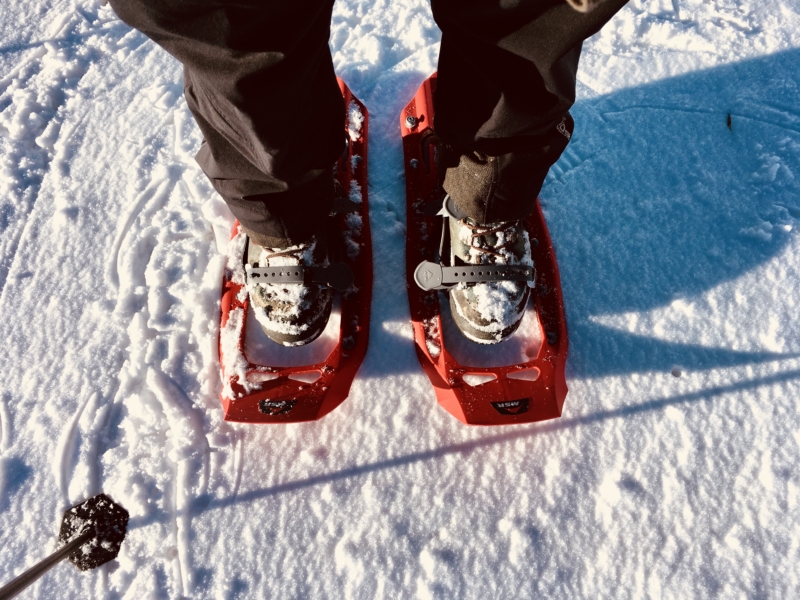

Snow shoe hiking




